A Rainy Day Adventure in Porto
by Monika Suchoszek
My journey started with a morning flight to Porto. With an evening train to Braga planned, I had the perfect opportunity to spend the day exploring Porto’s historic heart. After a quick 30-minute metro ride, I arrived at Bolhão station. As I stepped out, a light drizzle greeted me, turning my first mission into a hunt for an umbrella. Luckily, ALE-HOP, my daughter’s favorite shop, came to the rescue with a cheerful selection of umbrellas. My next stop was the nearby Mercado do Bolhão, as my stomach started to rumble, and this place has a roof, which was especially useful in such unpleasant weather. This market was first established as an open-air market, but in 1914, the current neoclassical building was opened. The place was re-opened in 2022 after a major renovation, and you can clearly see the changes—it’s modern, well-organized, and clean. It has a glass-covered roof, allowing natural light to reach the vendors who sell fresh flowers, vegetables, fruits, meat, cheeses, olives, and seafood. Stalls with traditional handicrafts add to the market’s charm.
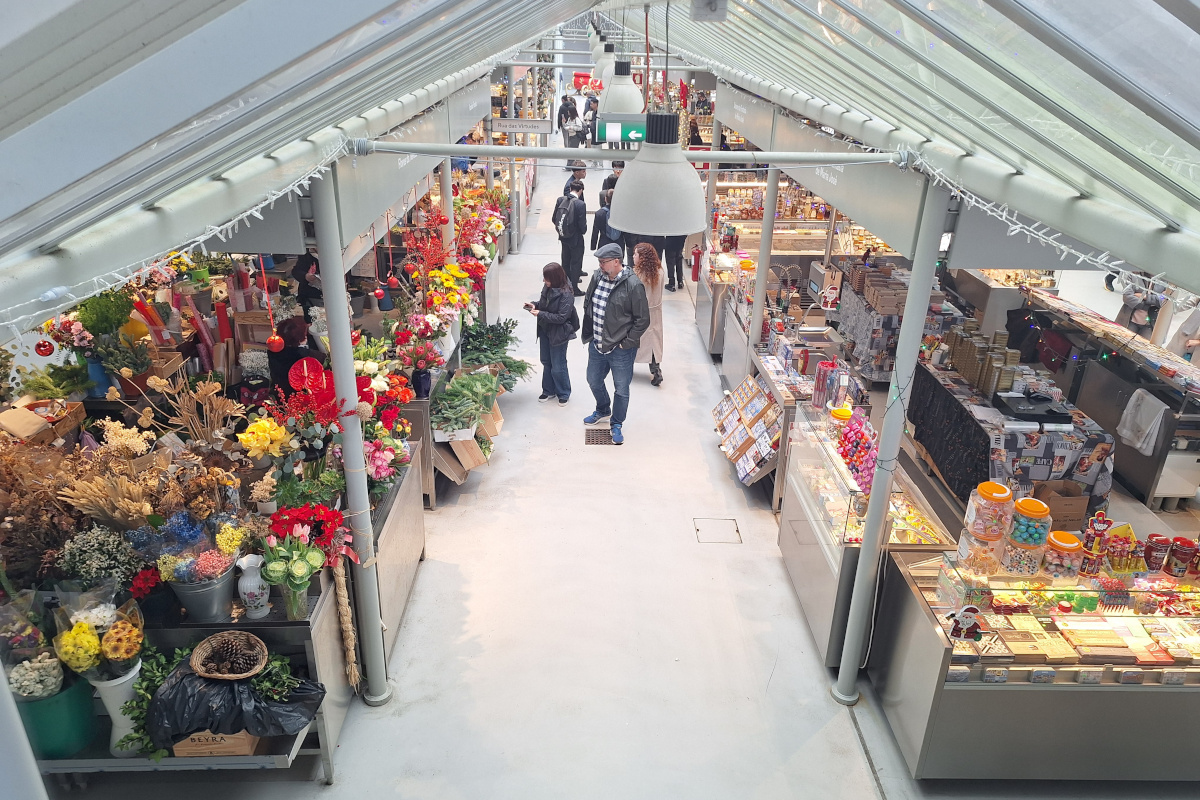
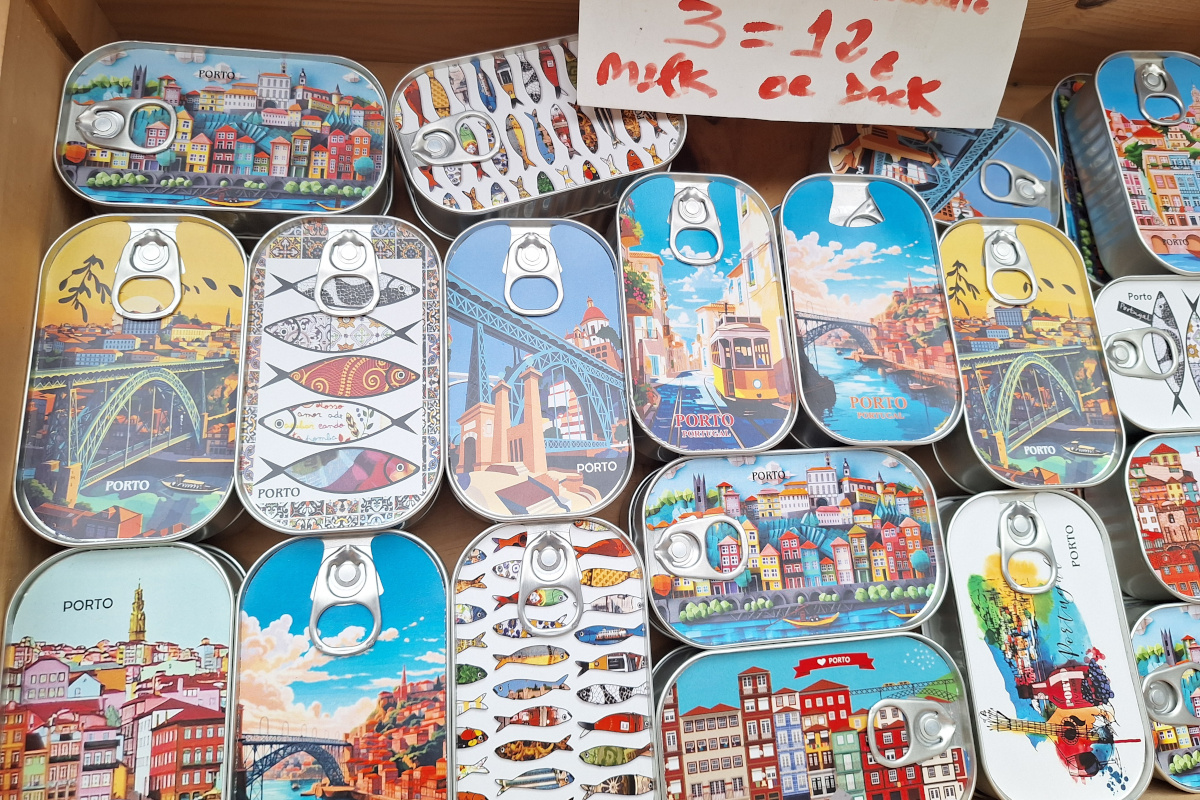
You can also find authentic Portuguese dishes at the market, from francesinha (a Porto sandwich) to fresh pastries like Pastéis de Nata. These iconic Portuguese pastries originated from the Mosteiro dos Jerónimos in Belém, Lisbon, in the early 19th century, where Catholic monks developed the first recipe. I’ve had the pleasure of visiting the monastery and Fábrica de Pastéis de Belém, the birthplace of these pastries, during our first trip to Lisbon. These are definitely my favorite pastries in Portugal, and I would never get bored of eating them. It’s very interesting to learn why monks created this pastry, which is rich in egg yolks. Monks and nuns used large quantities of egg whites to starch clothes, such as habits. The leftover egg yolks were creatively repurposed into desserts. Brilliant, right? The pastry shell should be really crispy—you should clearly hear it when biting into a piece—and the rich, creamy custard center creates the perfect contrast in textures and flavors. They’re best when eaten warm and fresh. I tried one at the famous bakery Manteigaria, next to the market, and it did not disappoint.
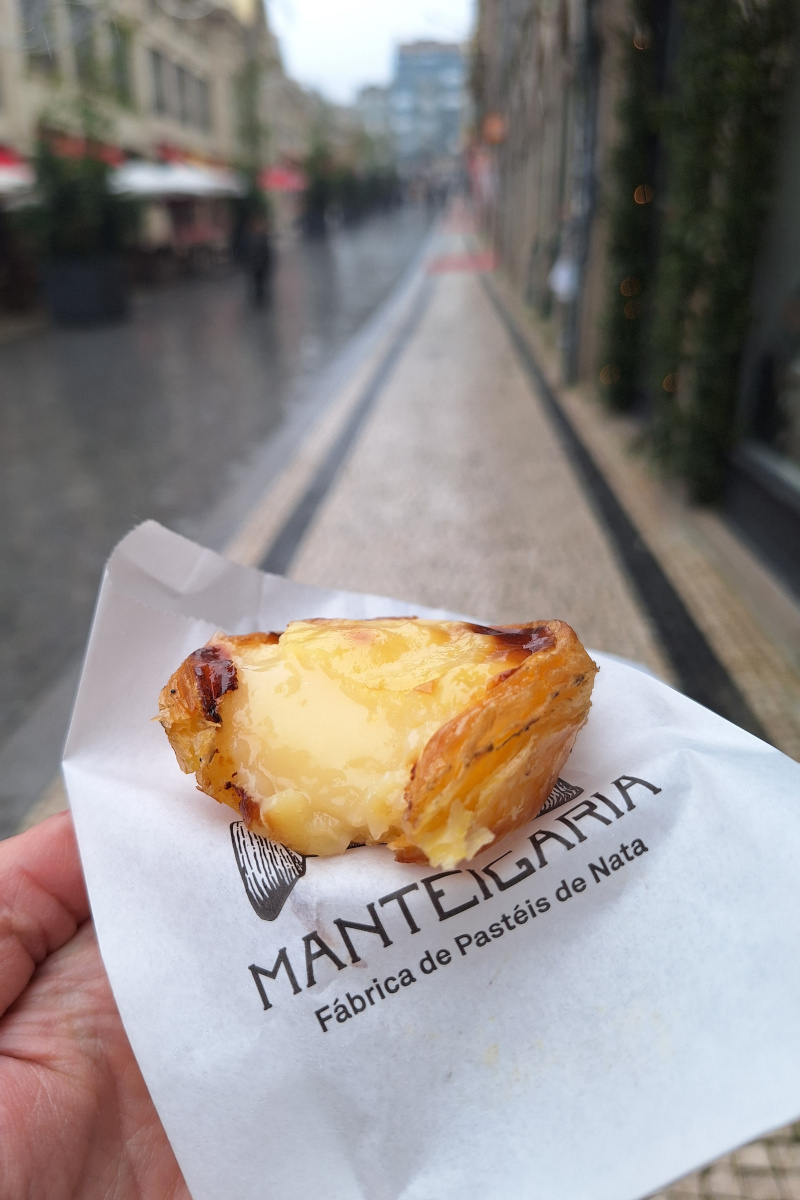
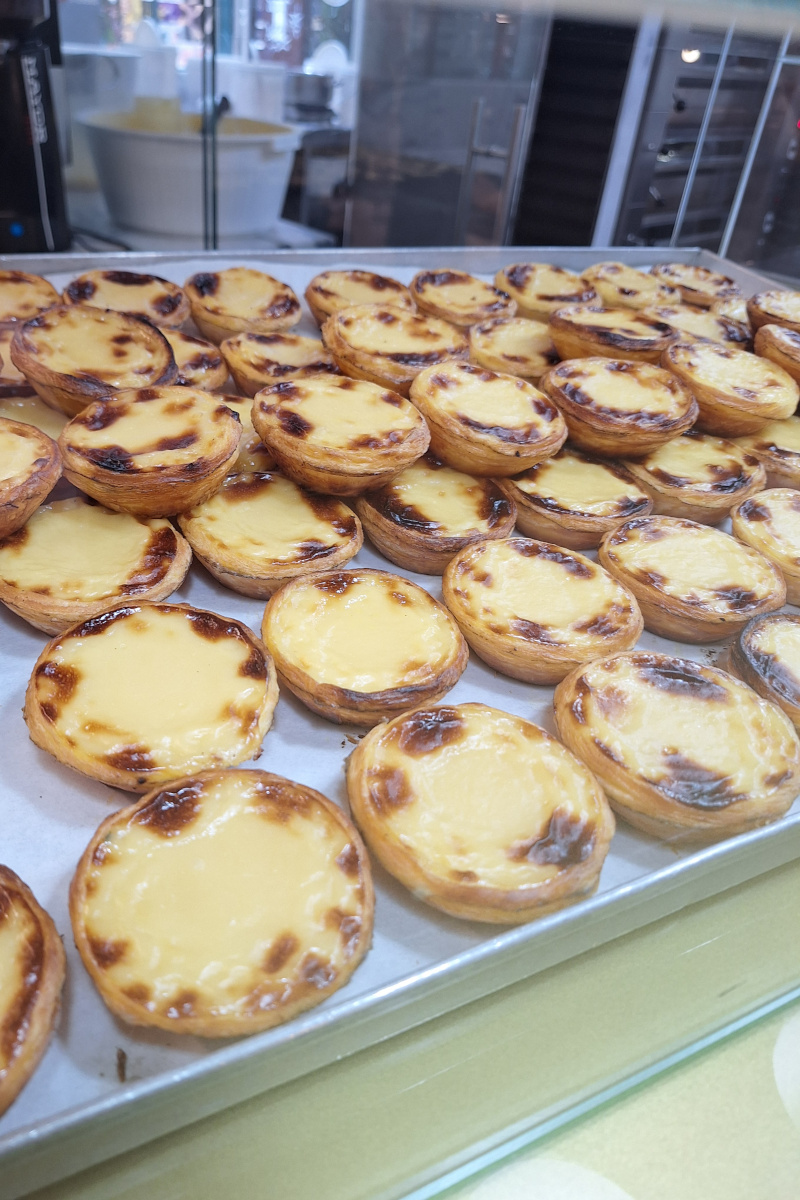
Nearby, the Chapel of Souls is definitely worth a quick stop. Its unique exterior, entirely covered in blue and white azulejo tiles, is visible from a distance. These stunning ceramic tiles depict scenes from the lives of saints and were added to the chapel in 1929. Located on Porto’s main shopping street, Rua de Santa Catarina, the blue azulejos cover an impressive area of about 360 square meters. This chapel is a perfect example of beautiful and unique architecture that deserves a visit when exploring the vibrant Bolhão area.
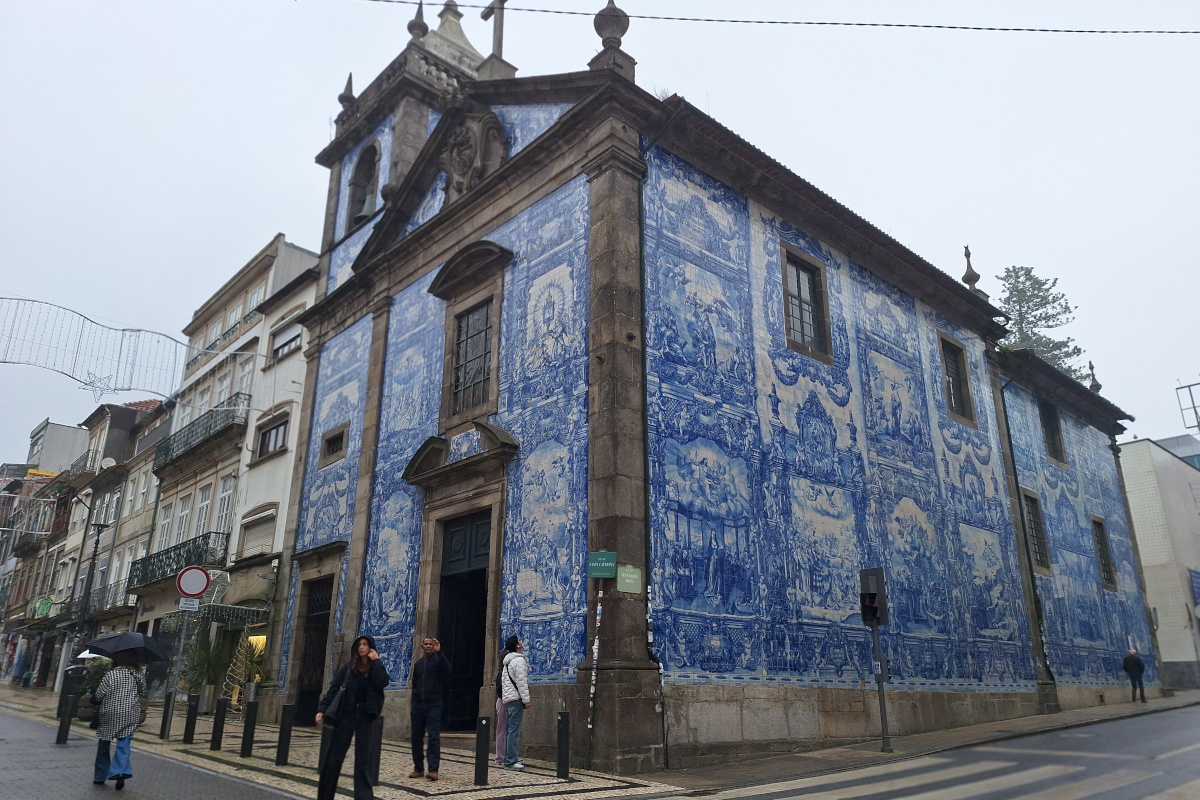

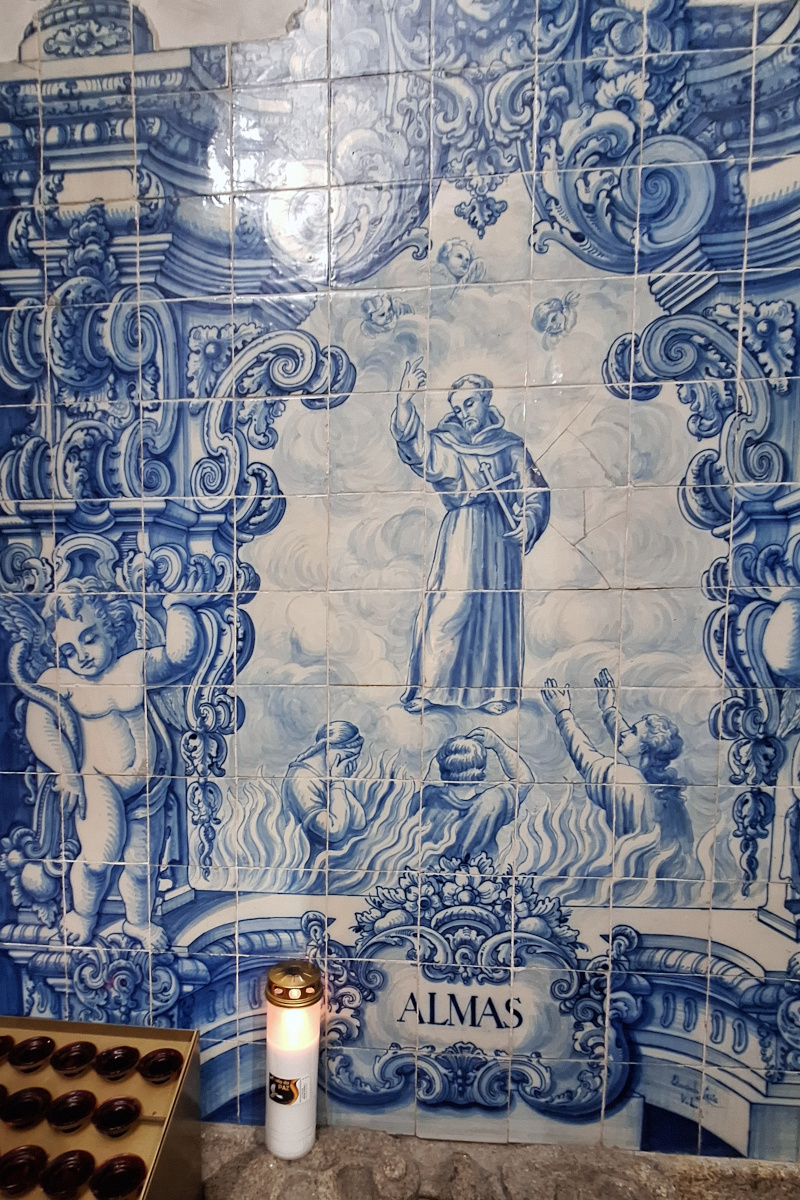
I continued my walk toward Gaia and the iconic Luís I Bridge. This remarkable structure features two levels, each serving distinct purposes: the upper deck for trams and pedestrians, and the lower deck for vehicles and pedestrians. Designed by Théophile Seyrig, a student of Gustave Eiffel, and completed in 1886, the bridge reflects the rapid industrialization and urban development of Porto during that era. Walking along the upper deck offers breathtaking panoramic views of the Douro River, Porto’s historic Ribeira district, and the wine cellars of Vila Nova de Gaia. Its unique two-level design is both functional and visually stunning, making it one of Portugal’s most photographed landmarks. I particularly enjoyed the misty weather, which added a magical touch to the views of the river and surrounding green hills.
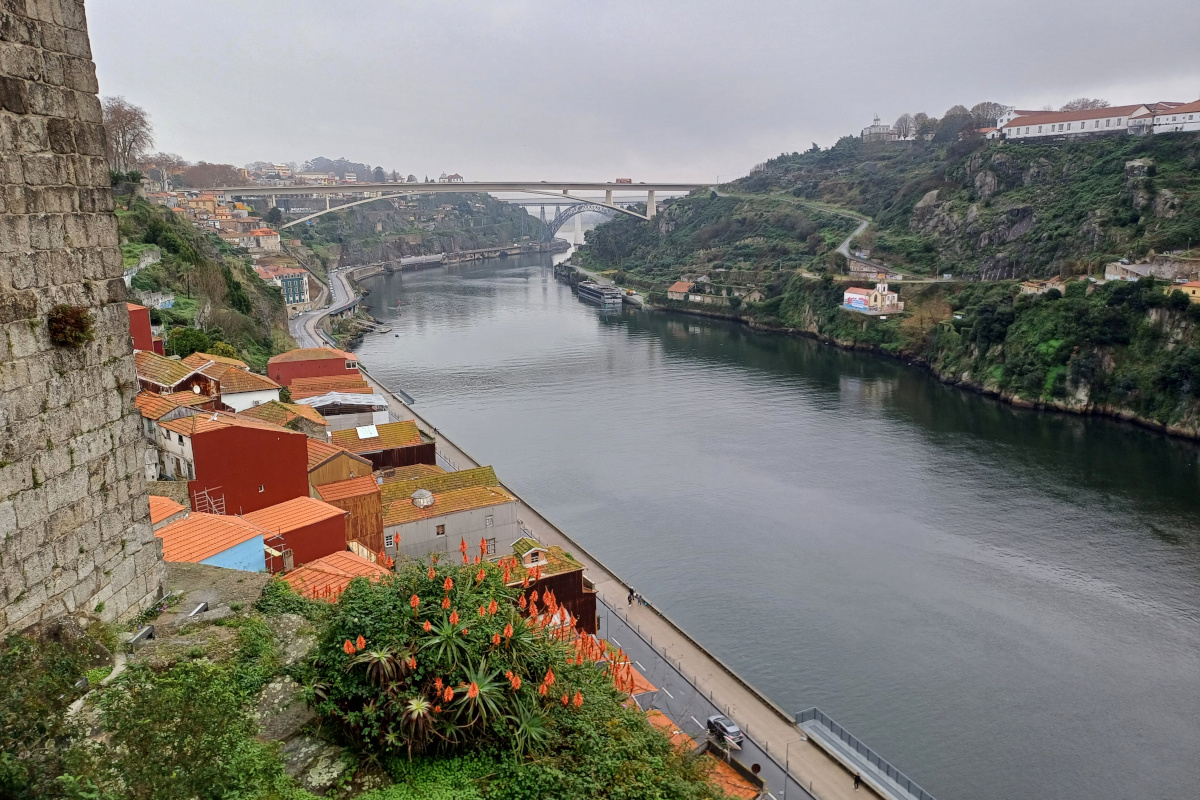
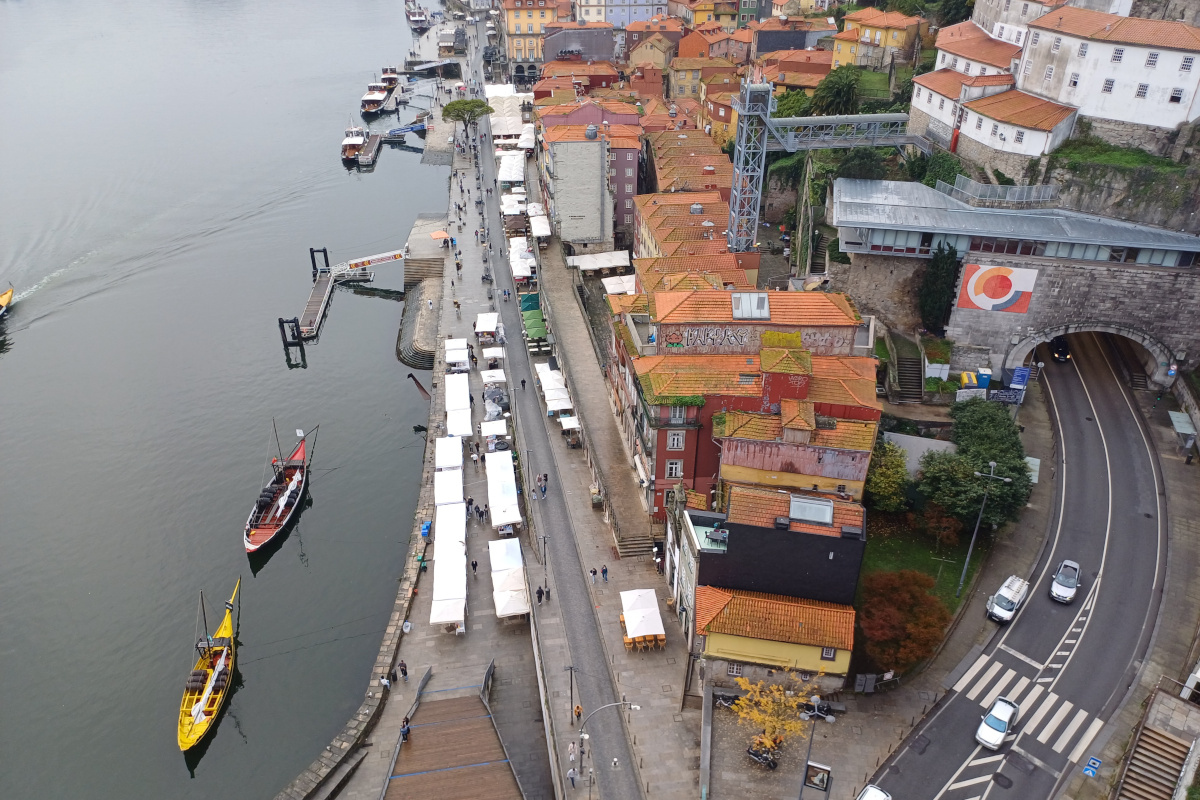
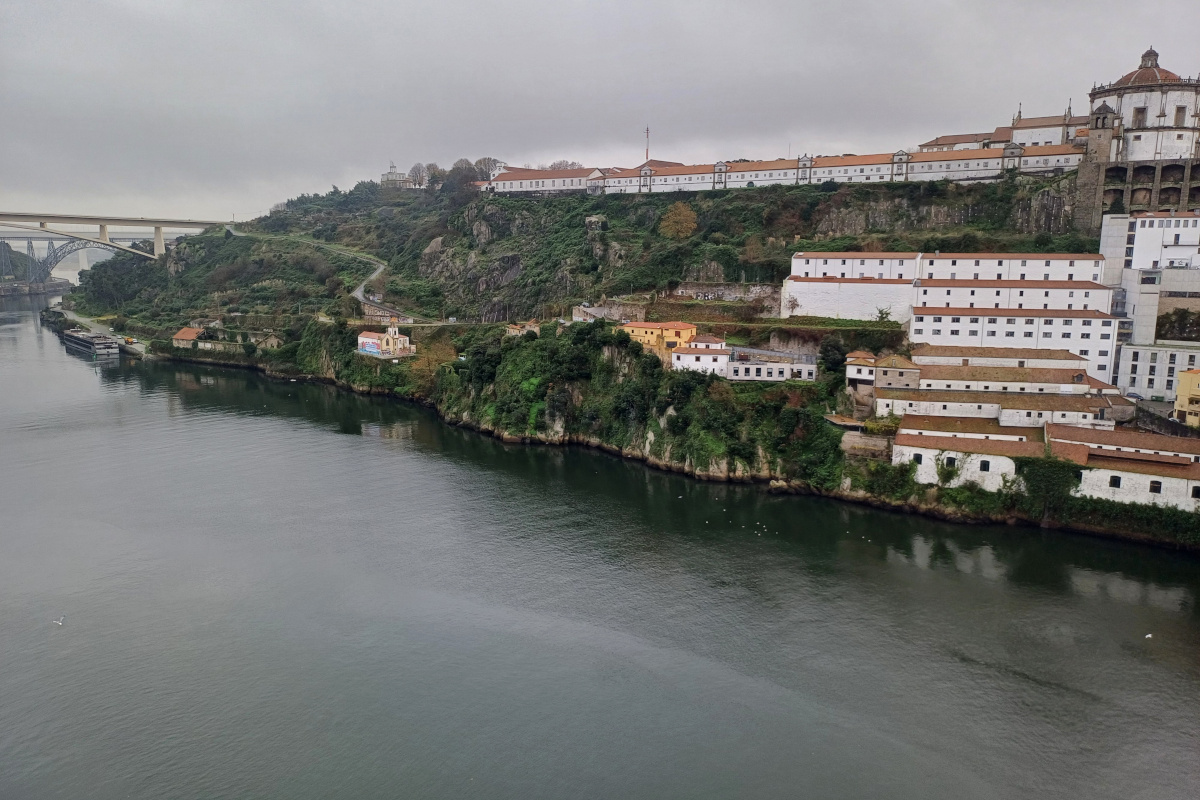
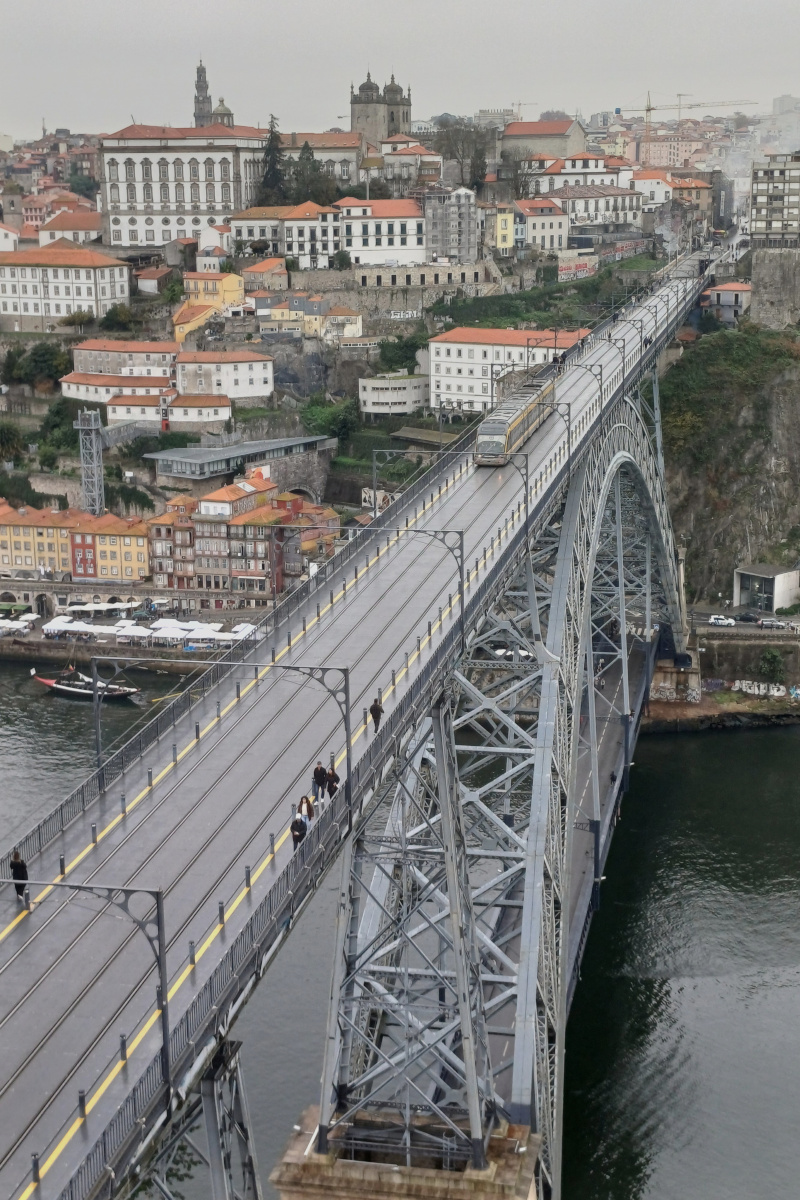
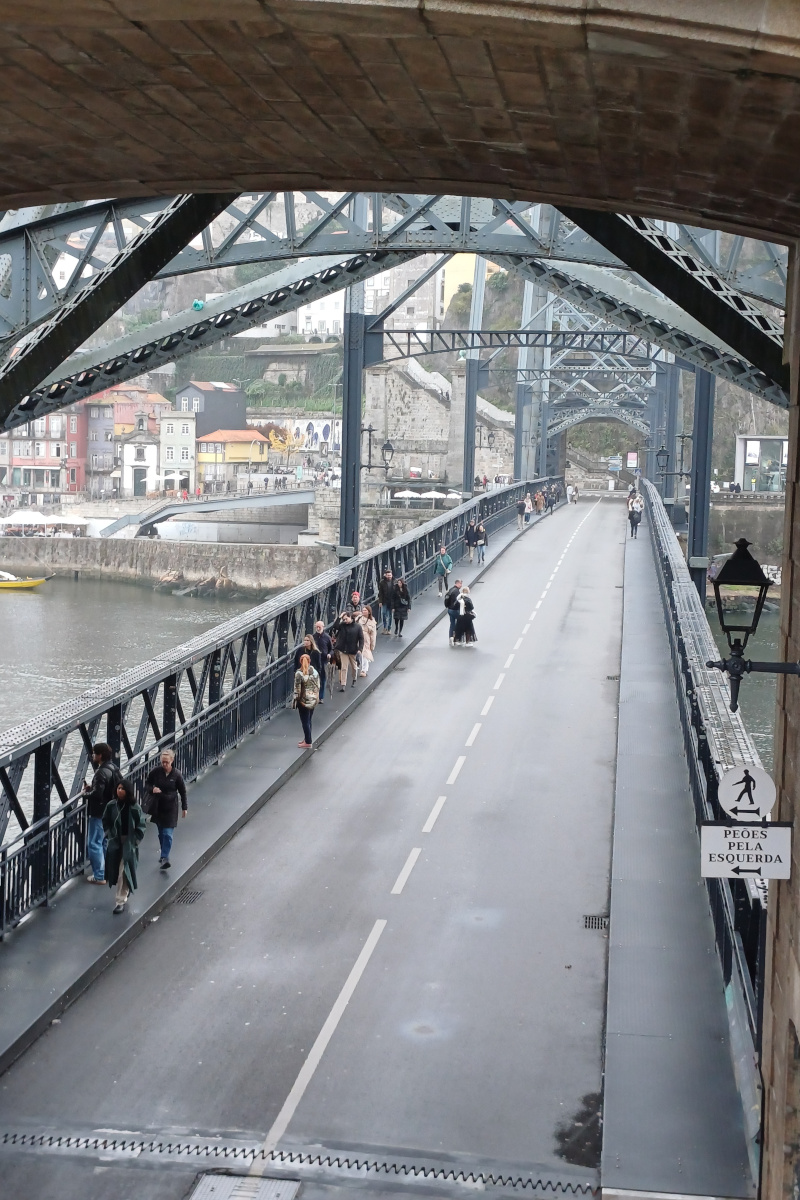
The Mosteiro da Serra do Pilar, a 16th-century monastery and UNESCO World Heritage Site, provides one of the best panoramic viewpoints over Porto and the Douro River. After visiting the viewpoint near the monastery, I continued my journey into the Gaia district, passing through Jardim do Morro. Gaia is well-known for its Port wine lodges, where visitors can learn about the production of this iconic wine and indulge in tastings. A cable car connects the riverside with the upper part of Gaia, offering scenic views of the city and the river below. I chose to walk down the narrow streets beneath the cable car and along the riverside promenade. This vibrant area is lined with restaurants, cafés, and shops, all offering stunning views of Porto and the Luís I Bridge.

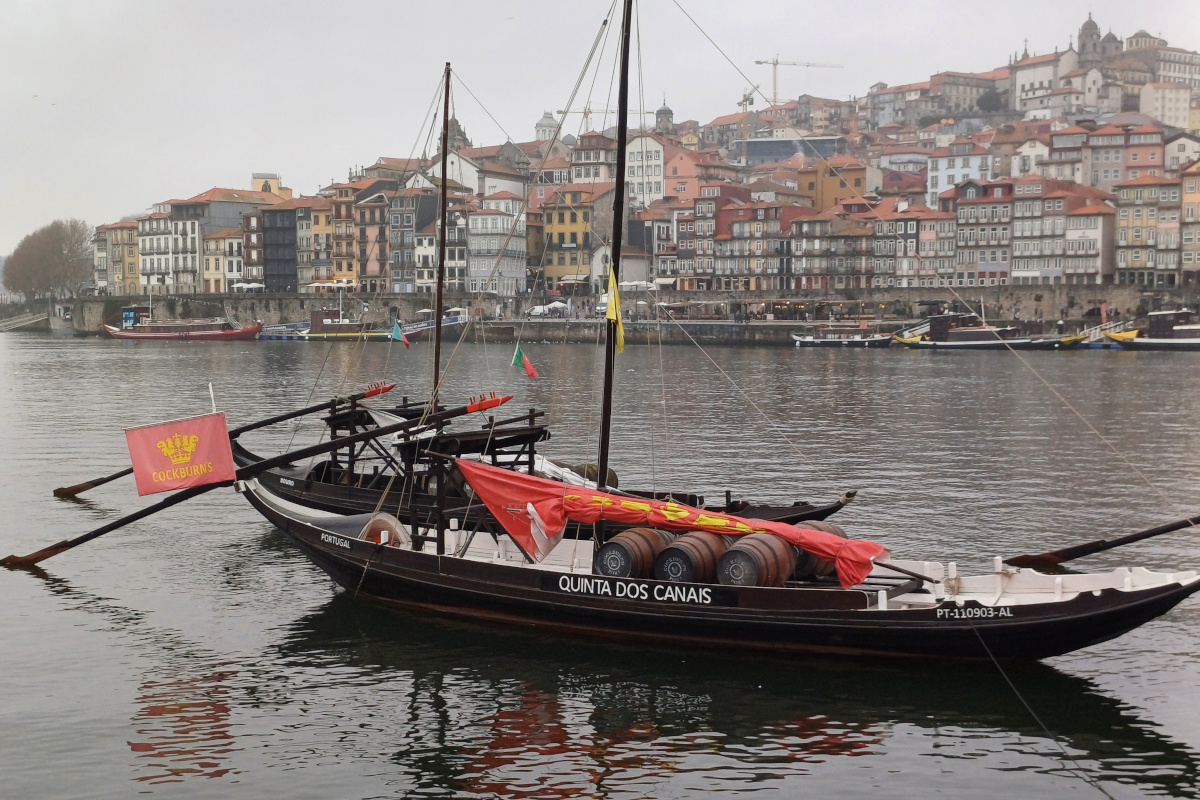
Like many urban areas in Portugal, Gaia faced economic challenges during the 20th century, resulting in periods of neglect. As industries declined and people moved to modern housing developments, many buildings were abandoned. Restoring these historical properties can be costly, and owners often lack the resources to renovate, especially when complex ownership or legal disputes are involved. This issue is similar to what is happening in Funchal, Madeira.
Fortunately, the rise in tourism has brought renewed interest in revitalizing Gaia. Projects like the WOW (World of Wine) district have transformed abandoned spaces into vibrant cultural and leisure destinations. As seen in the photo below, some rooftops remain collapsed, but efforts are ongoing to restore the area and breathe new life into its historical charm.
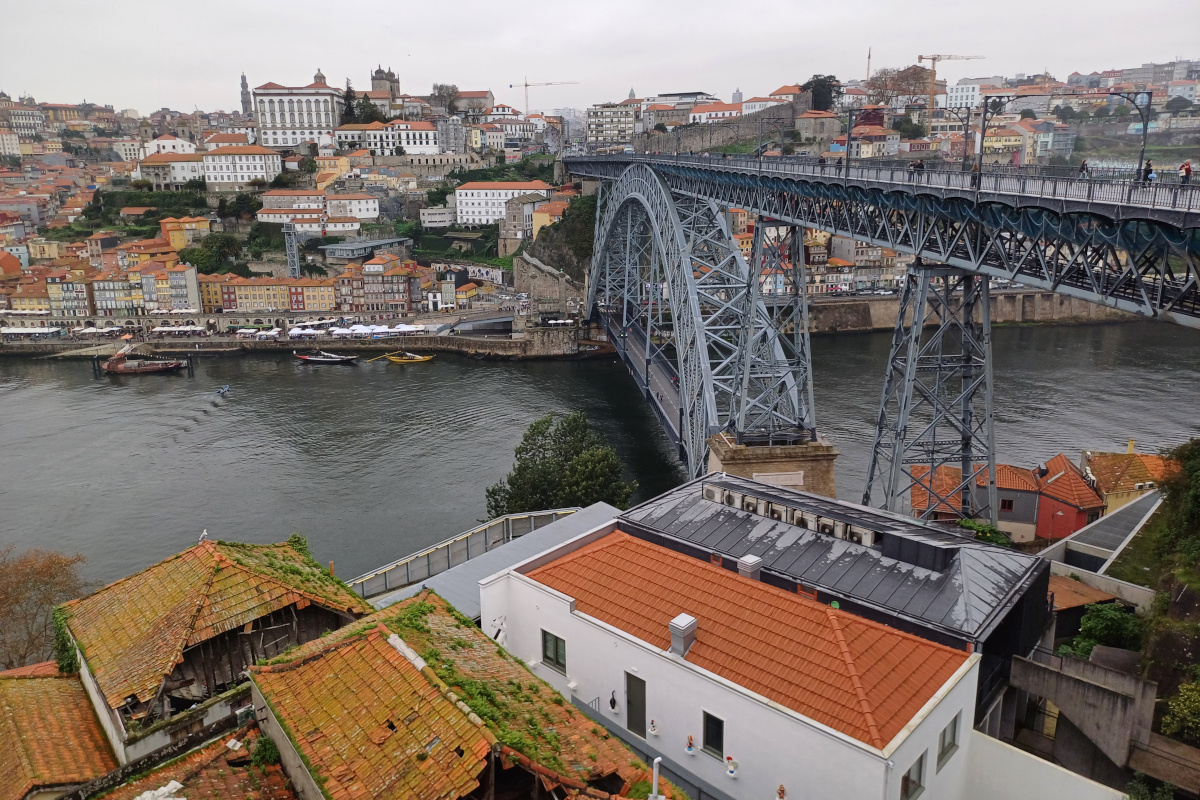
Porto São Bento train station, another place where stunning azulejo tilework can be admired, over 20,000 azulejo tiles! It is not just a transport hub but also a cultural and architectural gem that attracts countless visitors. It has very convenient location, just in the heart of Porto. Scenes from Portugal’s history,traditional rural life, including festivals, markets, and customs can be spotted on the walls. Name of this station originated from former Benedictine monastery. Despite its historical charm, São Bento is a fully operational railway station, serving regional and intercity trains, including train to Braga.
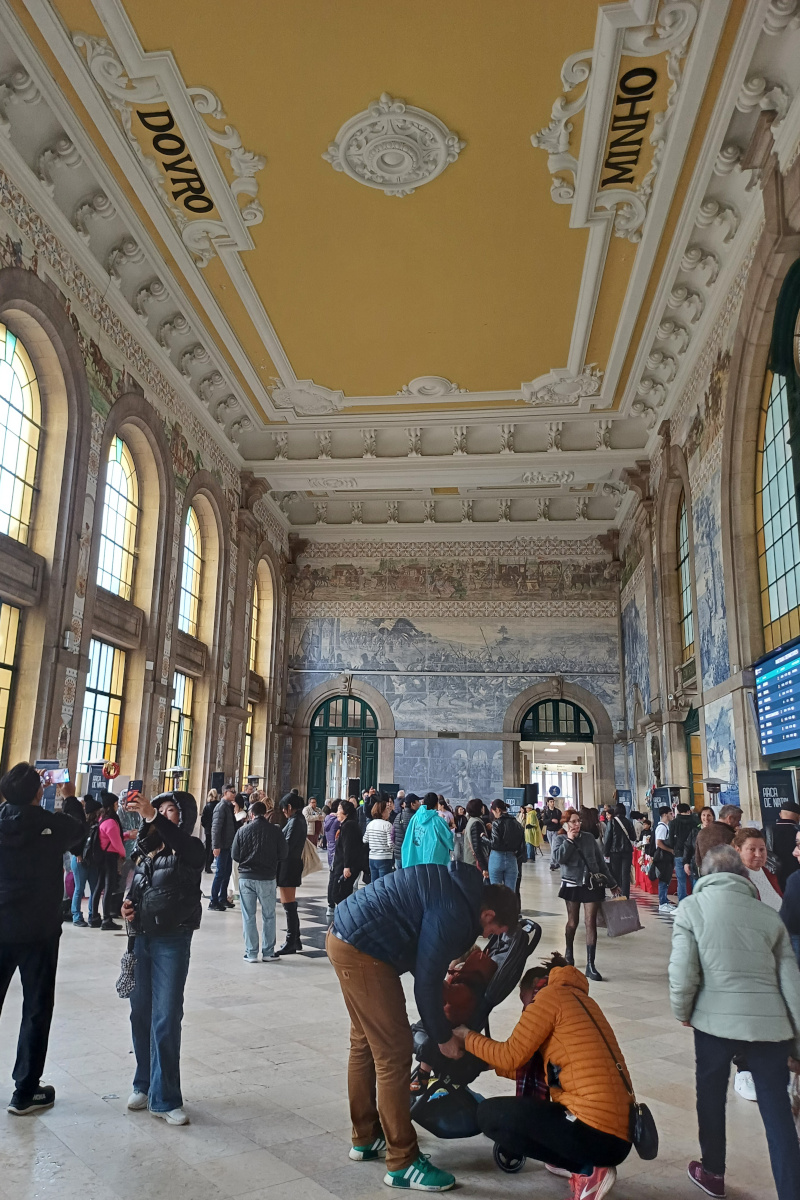
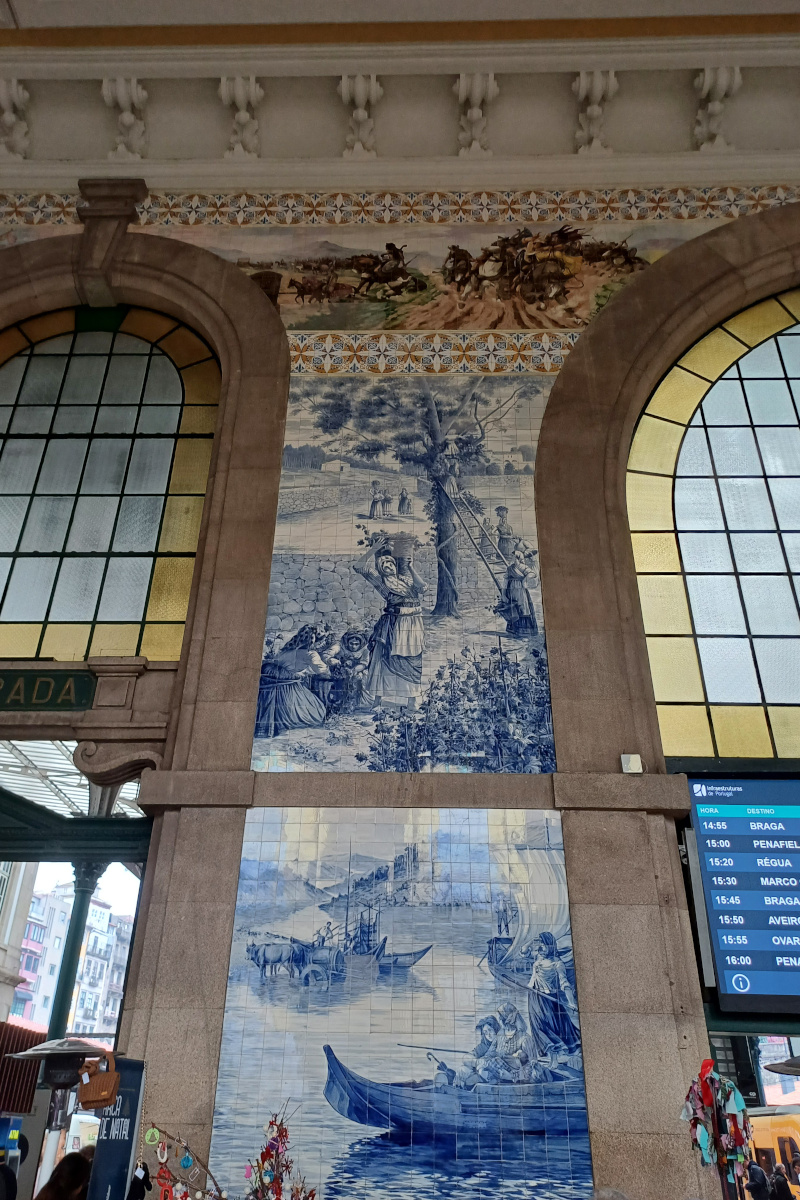
Jardins do Palácio de Crista, well-maintained park with fountains, sculptures was a perfect destination for a leisurely stroll. However, I would not recommend this place if you have only 6h to visit the city and weather is not great :) At the heart of the gardens stands the Pavilhão Rosa Mota, also known as the Super Bock Arena. This multipurpose venue hosts concerts, sports events, and exhibitions. I have noticed some peacocks there but they were all hiding under the roof of the pavilion. The gardens were originally designed around the Crystal Palace, that was destroyed in 1951 but park kept the same name.
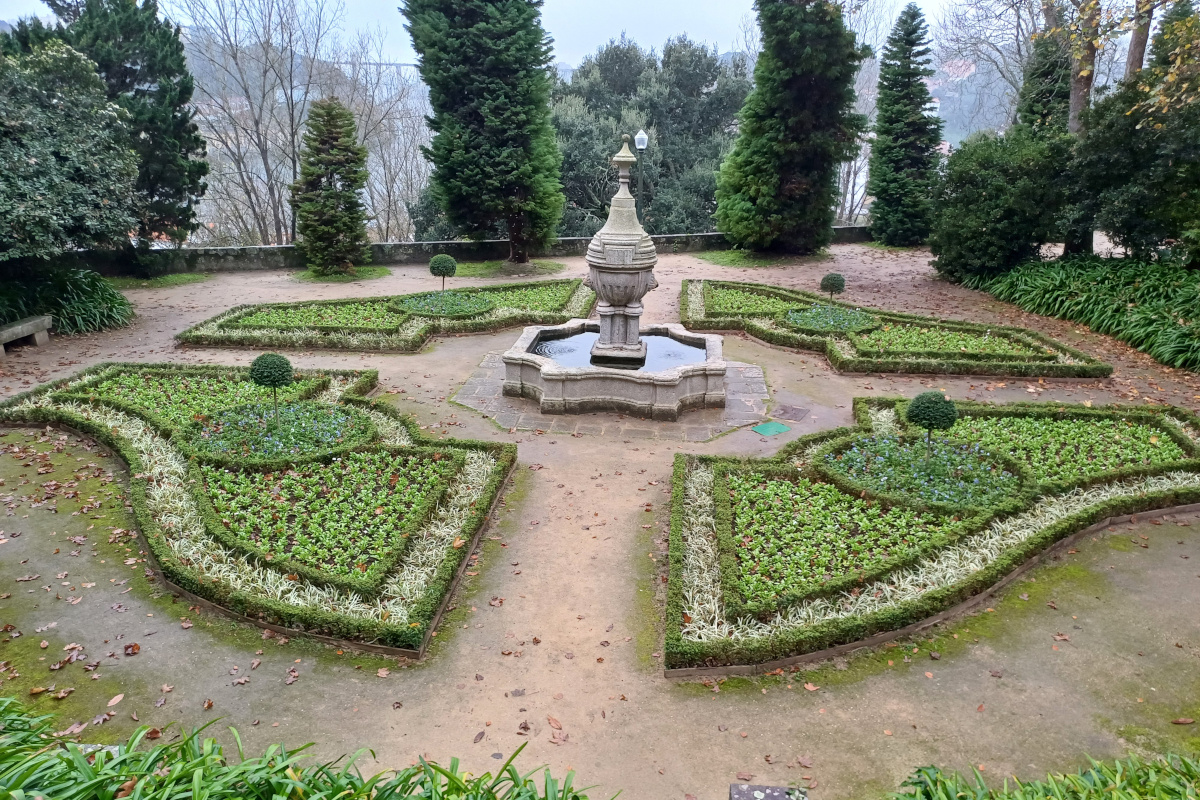
On the way to the park, I noticed vintage tramcars, symbol of the city’s history and charm. Operated by STCP (Sociedade de Transportes Colectivos do Porto), these historic trams are one way to explore its streets. There are only still 3 lines that are operating through Porto’s most picturesque areas. The trams are beautifully restored and retain their original wooden elements and classic design. If you’re interested in the history of Porto’s tram network, visit the Museu do Carro Eléctrico (Tram Museum) and its collection of vintage tramcars.
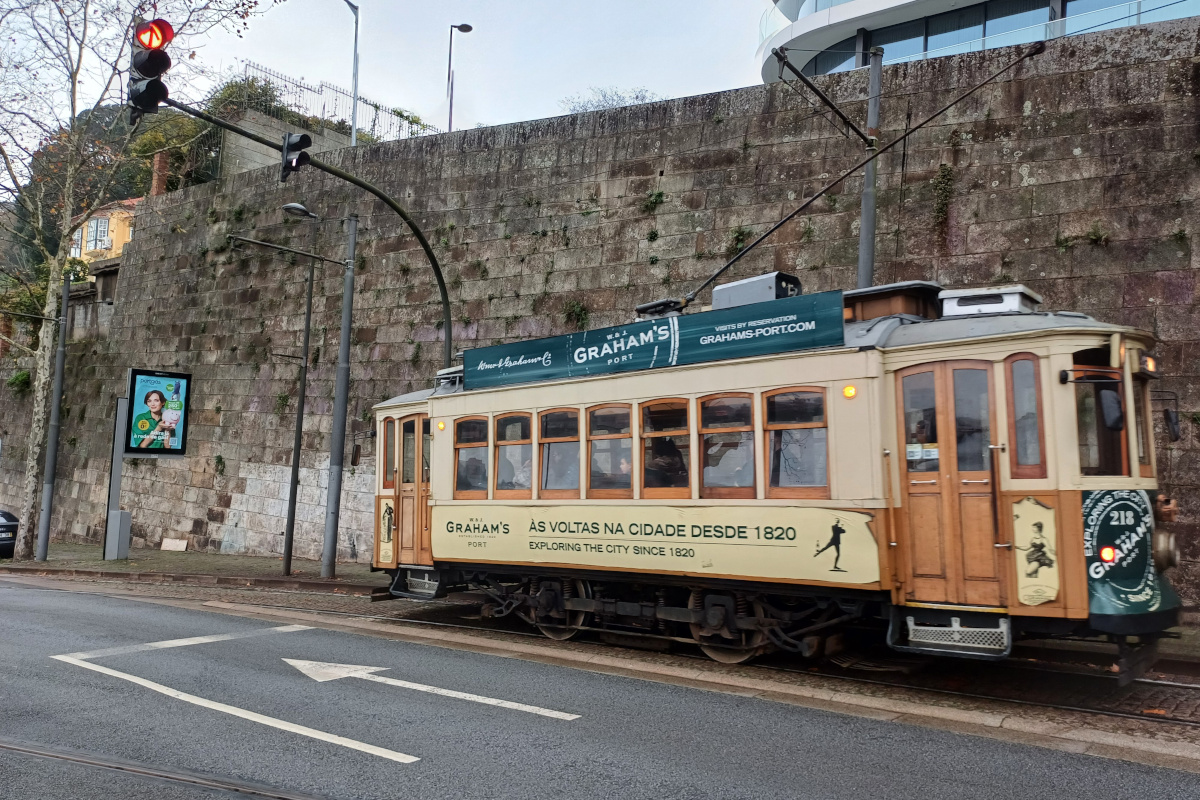
It was already getting dark when I passed the Christmas market in Jardim da Cordoaria. Though small, it was a pleasant place to explore. The streets nearby were filled with the smoky aroma of roasted chestnuts, sold by many vendors using traditional carts with small coal ovens. The smoke from the carts created a cozy, festive atmosphere as people walked by. Roasted chestnuts are typically sold on the streets during the autumn and winter months, from October to January, making them a seasonal favorite. I first tried this healthy snack a few weeks ago on Madeira and really liked them! They’re quite filling and are served in small paper cones, perfect for enjoying on the go. The towering structure near the Christmas market turned out to be the Clérigos Church, an iconic landmark in Porto. Unfortunately, I couldn’t enter without a ticket as the Spiritus Light Show was ongoing at the time. All the Christmas decorations started to light up on the streets, and despite the rainy weather, the atmosphere in the city was cheerful. Igreja do Carmo church was another one in the area of the Christmas market that caught my attention, visible on the top photo below.
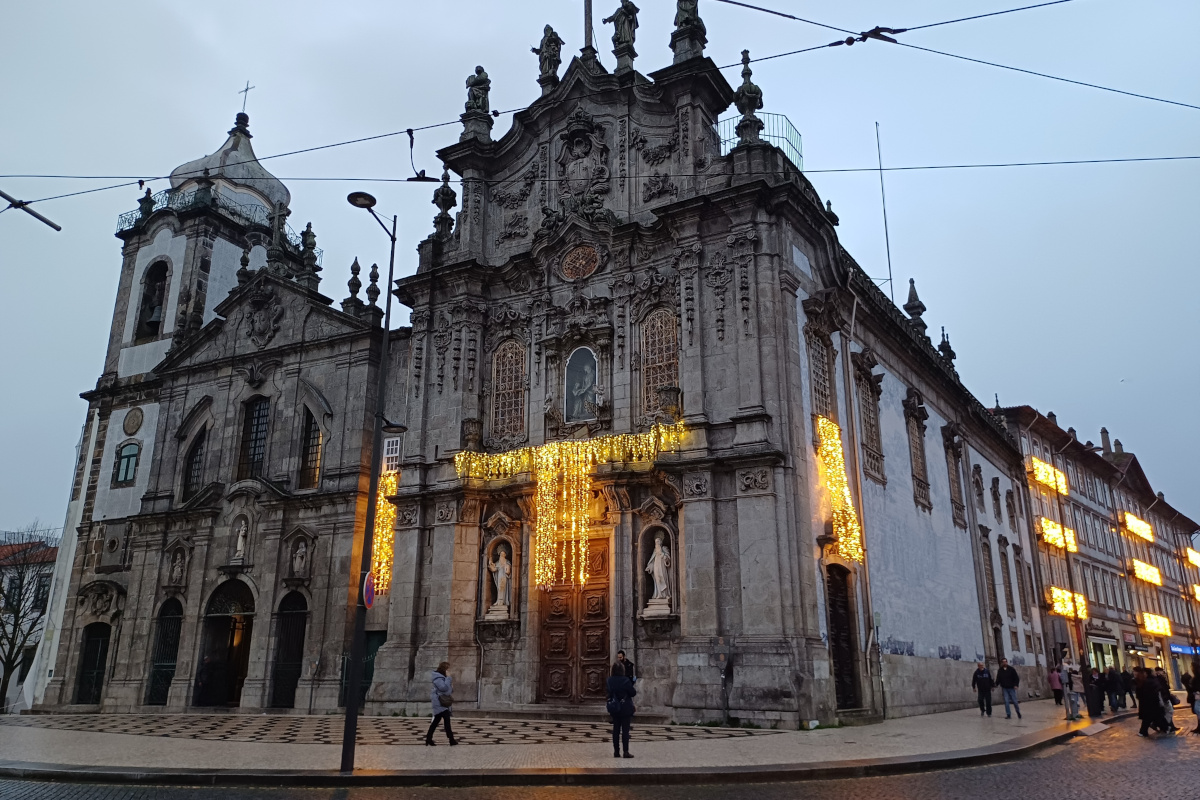
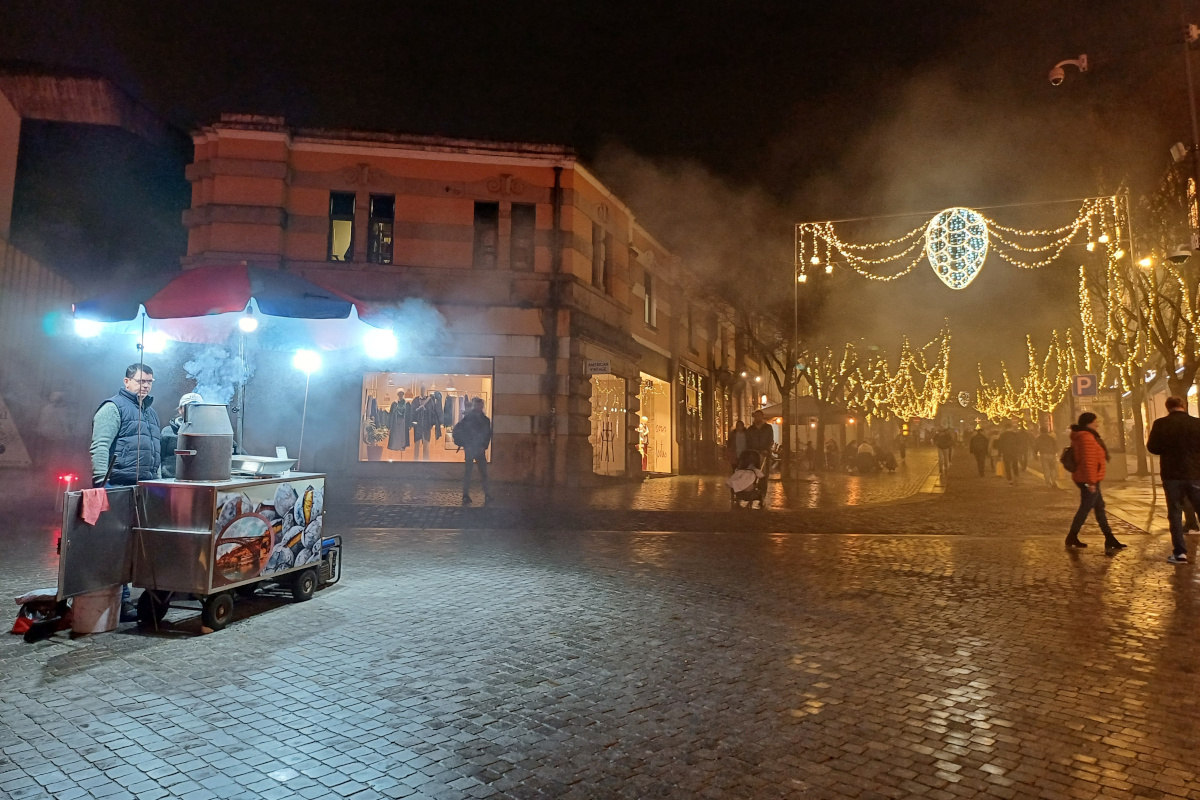
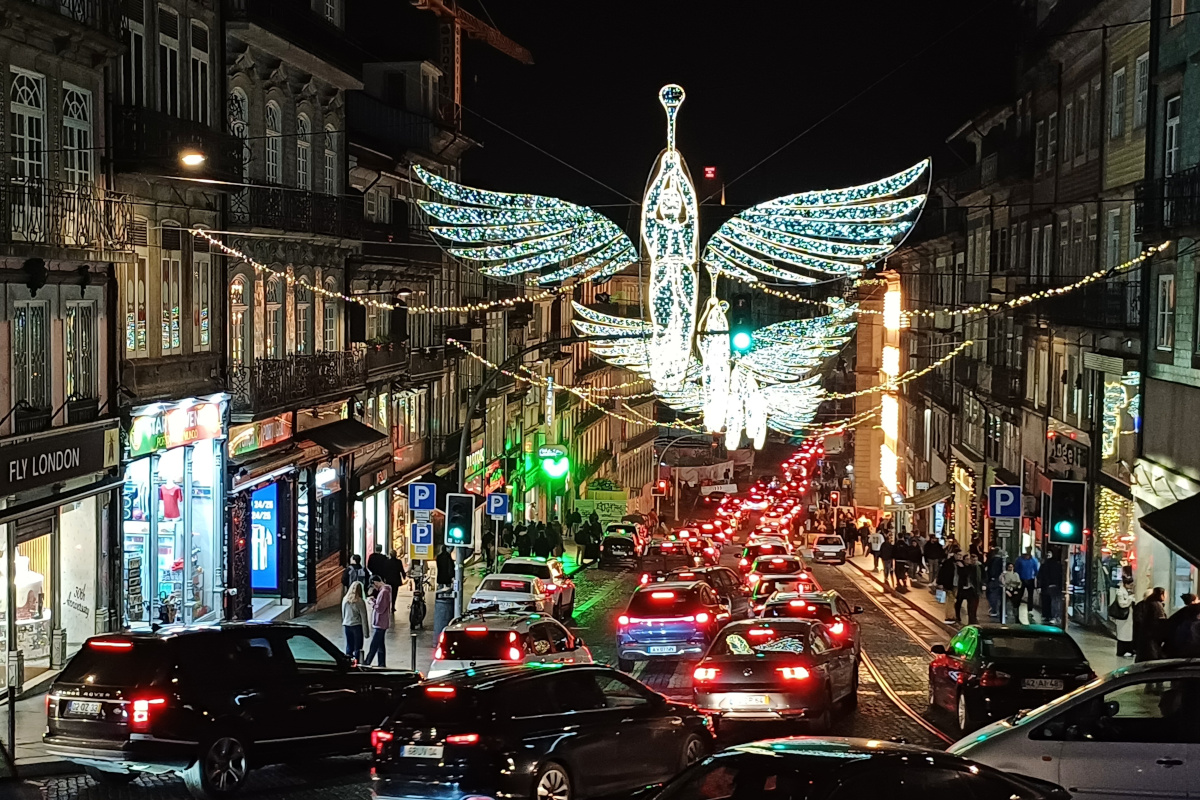
On the way to the train station to catch my train to Braga, I realized I hadn’t visited Porto Cathedral! With an hour left before my train’s departure, I quickly rushed to the Batalha neighborhood, where the cathedral is located.
Approaching from Avenida Dom Afonso Henriques, the cathedral’s fortress-like appearance immediately caught my attention. There were also Christmas stalls along this part of the street, adding to the festive atmosphere of the city. I explored the almost deserted area around the cathedral and walked a bit downhill, wandering through narrow streets. By then, it was already dark, so unfortunately, there were no views of the Douro River or the Luís I Bridge from the cathedral square. The cathedral is a significant stop on the Camino de Santiago pilgrimage route, and it’s common to see pilgrims beginning their journey here. While my visit was brief, it was still fascinating to experience this historic and iconic landmark.
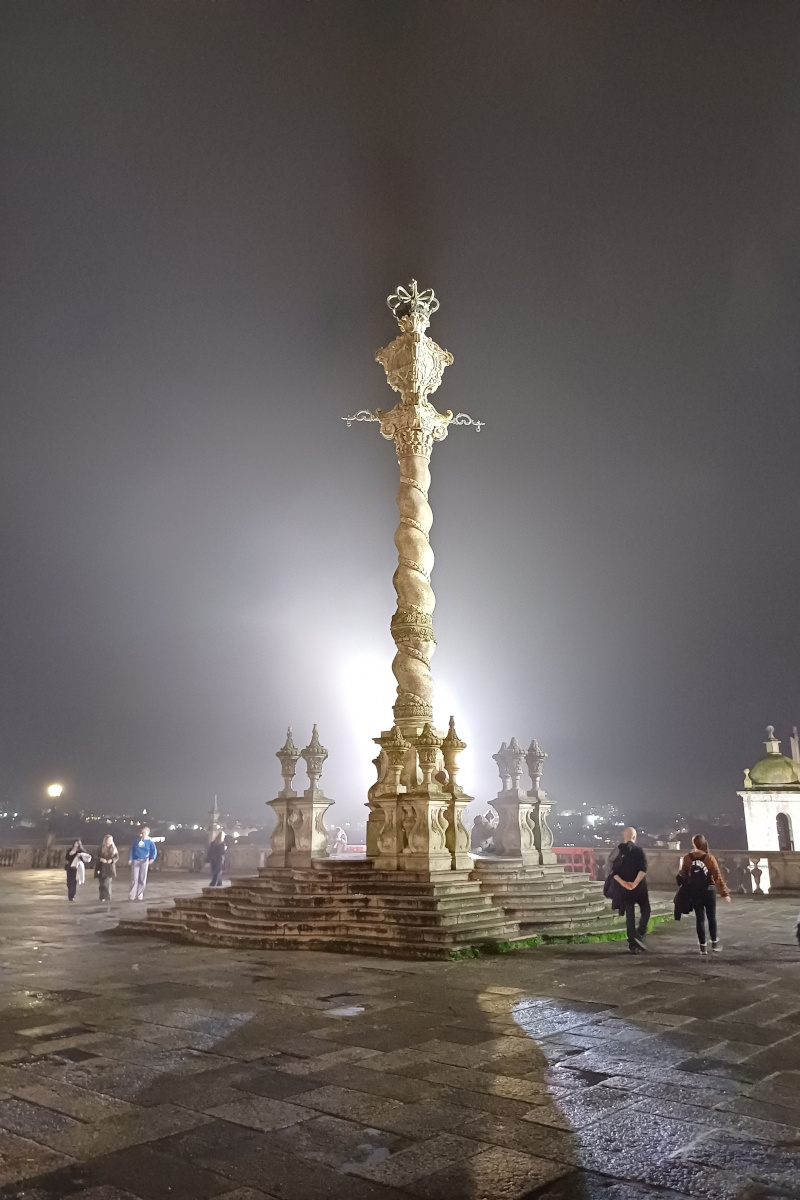

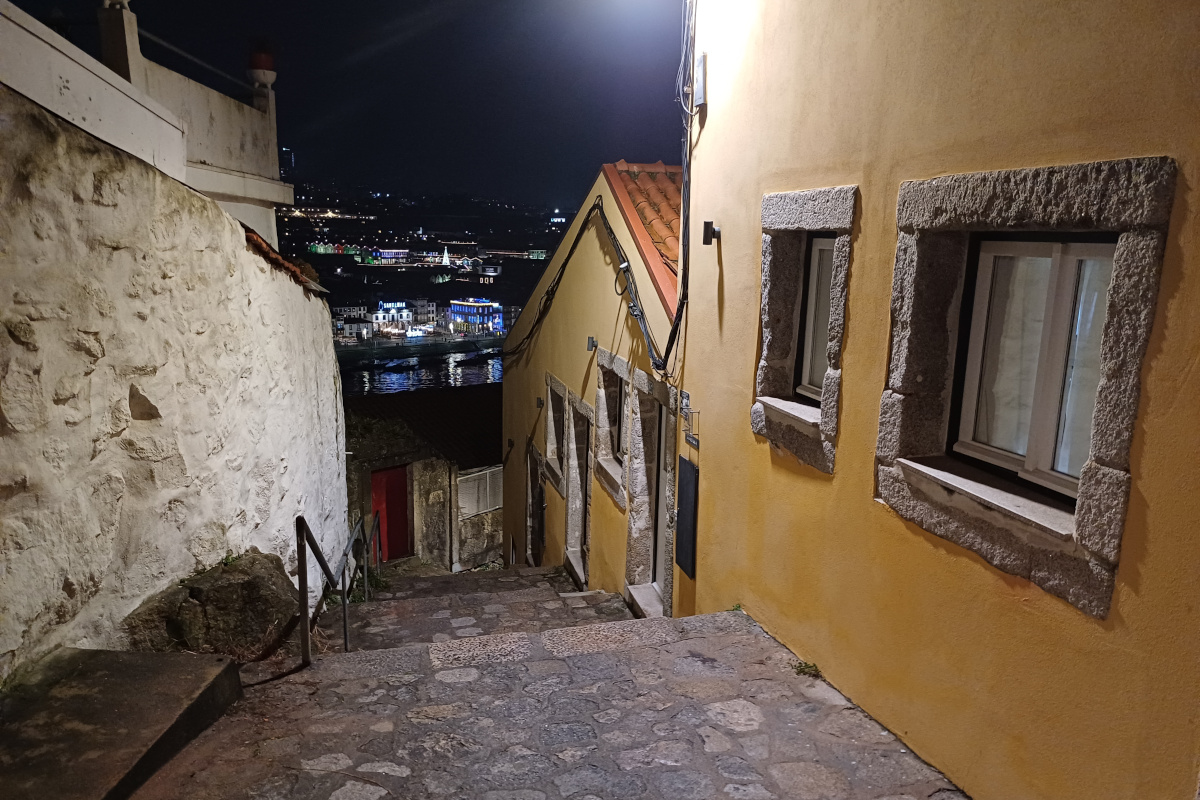
As my day in Porto came to an end, I couldn’t help but smile at how much I managed to see and experience in just a few
hours. From the lively Mercado do Bolhão to the stunning azulejo tiles at São Bento station, the city had a way of surprising
me at every turn. The Christmas lights glowing in the drizzle and the smoky aroma of roasted chestnuts made the streets
feel so cozy, even in the rain.
As I hopped on the train to Braga, I knew one thing for sure—I’d be back to explore even more someday
Practical info:
-
Metro ticket was 2.85 euro (2.25euro zone Z4 + Andante card 0.60euro). Andante card can be re-chargeable. On the ticket machine, there was a sticker with all metro station names and next to the, there was a zone that applies when you go there from the airport. I went to Bolhão metro station so it was Z4. You can also check more details however when I check connection Aeroporto – Bolhao, price for single ticket was 2euro so website is not showing correct ticket fare (zone was correct though).
-
Restaurant in Porto PAPO CHEIO - A Tasca de Cedofeita, the restaurant has a small surface inside and tables outside and serves delicious local dishes. Superb value and very friendly service. Address: R. de Cedofeita 95, 4050-166 Porto, Portugal
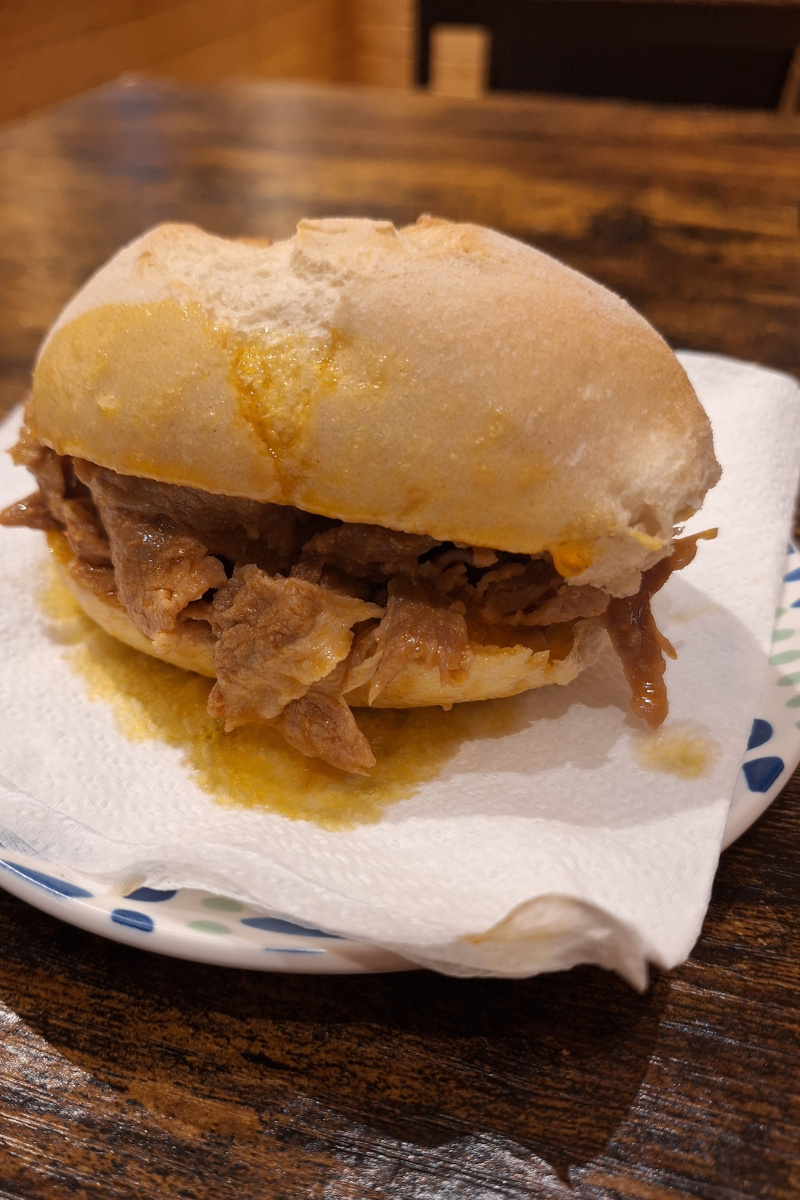
-
Manteigaria – Fábrica de Pastéis de Nata sells fresh and hot Pastel de Nata with tasty and very soft cream. Pastries are prepare and baked on spot (€1.30 a piece).
-
Train from Porto to Braga was 3.95 euro (3.45euro ticket + 0.50euro SIGA card). This card is reusable and has contactless technology to carry up to 31 single tickets that can be used in either direction. Using the ticket machine was a bit challenging, as even when switched to English, the translation was inaccurate. It took a few attempts and a bit of trial and error to figure out how to purchase the correct ticket.
Subscribe via RSS
